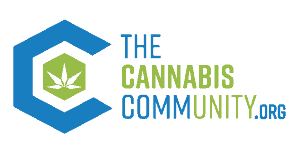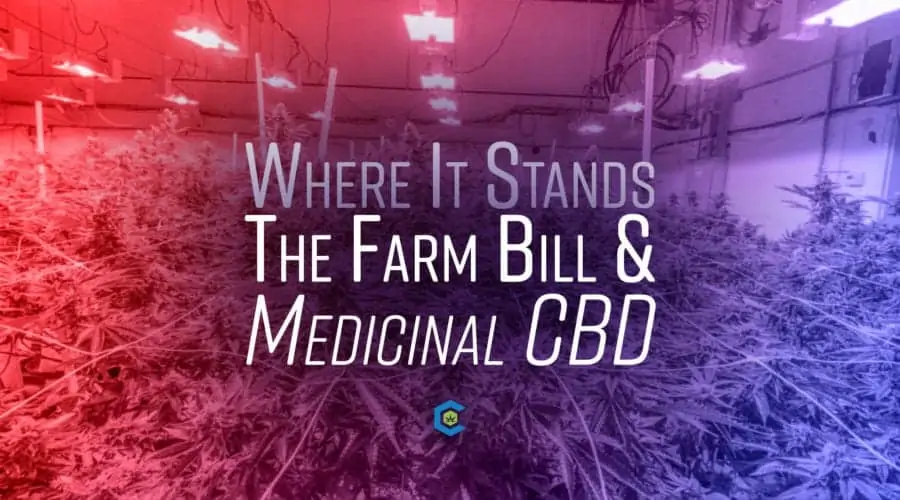Medicinal CBD and The Powerful State of Where it is Today
Medicinal CBD & The Farm Bill
“Absolutely George toked weed, are you kidding me, man? He grew fields of that stuff, man, that’s what I’m talking about, man, fields.”
— Slater, Dazed and Confused
Cannabis enthusiasts asserting the agricultural value of hemp can rest easy.
Thanks to the passage of the 2018 Farm Bill, we may soon see fields of hemp once more across the countryside. With Kentucky’s major cash crop—tobacco—faltering amidst growing health concerns, Mitch McConnel, Kentucky’s senior Senator, and Senate Majority Leader, fronted The Hemp Farming Act of 2018. Embedded within the Farm Bill, the amendment alters the Agricultural Marketing Act of 1946, making it once again legal for states to grow cannabis sativa.
Hemp Derived CBD From Industrial Hemp
There is, of course, a caveat: in order for the cannabis sativa grown on farmlands to be legal, it must contain less than 0.3% THC, the chemical responsible for the plant’s psychoactive effects. The buds of such a plant, if dried and smoked, would not produce the high that users generally seek—this bill instead aims to reinstate cannabis sativa as a source of material for a wide array of industrial uses.
It’s a proper step for agriculture, given hemp’s incredible versatility, but it does little to resolve the medical situation, despite the emergent role of the cannabinoid CBD in medicine.1–3 Cannabidiol (CBD), one of over 100 identified cannabinoids within Cannabis Sativa, has been touted as having neuroprotective, anti-inflammatory, and anti-anxiety properties, among others.2,4
Medicinal CBD Extraction and Purity
Whether CBD is sourced from high-THC strains or industrial hemp, the CBD molecule is still the same, regardless of the source it came from. However, the matter of legality is another question entirely. Generally, extractors use only the flowering tops of the female plant as a source of CBD, as the seeds, stalk, and stems offer an inferior yield of lesser quality. The leaves may also be used, but due to the extra source material required and their tendency to bioaccumulate heavy metals, the purest CBD will come from flower.5
Due to the decades-long research embargo on Cannabis Sativa, we still don’t fully understand how cannabinoids interact within our own endocannabinoid systems. Questions arise concerning the best means of extraction to ensure the highest medical efficacy. There are two main options: isolate and full-spectrum.
Isolate versus Full Spectrum
A CBD isolate is a purified, crystalline product that is generally 96-99+% CBD, derived from cannabis sativa after initial processing using CO2, ethanol, or hydrocarbons to predominantly isolate the CBD molecule. Alternately, a full-spectrum product refers to an extract that contains the naturally occurring spectrum of cannabinoids, terpenes, and other phytonutrients inherent within the plant. This combination enhances the biological activity of a full-spectrum dosage when compared to an equivalent milligram dose of CBD isolate, potentially boosting the efficacy of the dosage.
An isolate can always be added to a full-spectrum product to standardize the dosage, and while an isolate will be pure CBD, full-spectrum can potentially contain trace amounts of THC. The most reputable vendors are able to produce COAs (Certificates of Analysis) from verified 3rd party testers, who use HPLC, GC-MS, and other spectroscopy techniques to test for cannabinoid levels, as well as pesticides, heavy metals, and microbial residues. The FDA does not recognize CBD as a supplement with medical benefits, however, and will not abide by any claims to the contrary.
Unless, of course, it’s Epidiolex.
Epidiolex and Moving Forward
Recently, the FDA approved a patented CBD solution called Epidiolex as a treatment for Lennox-Gastaut Syndrome and Dravet Syndrome, two rare forms of childhood epilepsy.3 And Epidiolex, with less than 0.1% THC, is considered Schedule V by the DEA. If CBD is not sold as an approved pharmaceutical, however, it does not have the same legal status, returning the substance to the federally mandated Schedule I tier.
Although HHS research patent 663,0507B1 contains data to support the benefits of CBD as a neuroprotectant, the molecule, unfortunately, remains in the wild west of legality; the FDA will now be tasked with the regulation of the renegade CBD industry.
Contradictions aside, dominoes are falling. Reintroducing Cannabis Sativa to the agricultural community will help demonstrate the plant’s value to a society that has dealt with its demonization for half a century.
The legal gray areas still give sway to those who might gain relief from CBD but are concerned about being prosecuted. And until we get some serious answers from the government justifying the criminality of medicine, we’ll thrive in the light of their hypocrisy.
- Hammell, D. et al. Transdermal cannabidiol reduces inflammation and pain-related behaviours in a rat model of arthritis. Eur. J. Pain Lond. Engl. 20, 936–948 (2016).
- Welty, T. E., Luebke, A. & Gidal, B. E. Cannabidiol: Promise and Pitfalls. Epilepsy Curr. 14, 250–252 (2014).
- Rosenberg, E. C., Tsien, R. W., Whalley, B. J. & Devinsky, O. Cannabinoids and Epilepsy. Neurother. J. Am. Soc. Exp. Neurother. 12, 747–768 (2015).
- Cannabidiol as a Potential Treatment for Anxiety Disorders. Available at: https://www-ncbi-nlm-nih-gov.ezproxy.rush.edu/pmc/articles/PMC4604171/. (Accessed: 12th January 2019)
- Girdhar, M., Sharma, N. R., Rehman, H., Kumar, A. & Mohan, A. Comparative assessment for hyperaccumulatory and phytoremediation capability of three wild weeds. 3 Biotech 4, 579–589 (2014).

